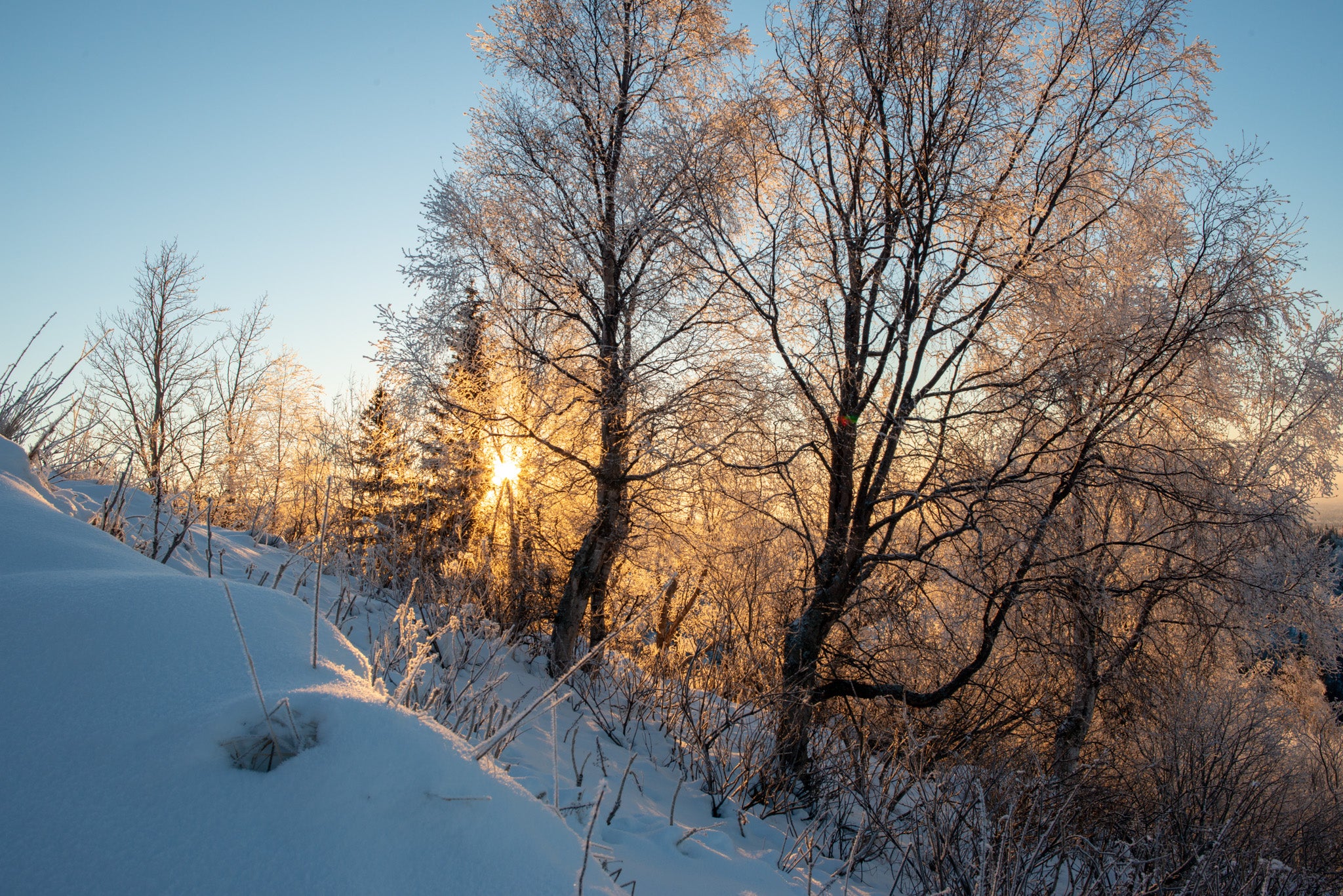Difficulty level: hard to extreme
Hiking in summer is easy: hiking shoes, shorts, shirt, water and a snack. Hiking in winter is never that easy. Conditions on the ground and in the air dominate your plans, often changing how you thought the day was going to go. Add in the Alaska factor with big distances, limited support, and harsher conditions and you might think twice on your ambitions. Pack carefully and always pack a little extra just in case because the consequences otherwise are misery and frustration. The most important factors are your layers and your footwear; if you nail these 2, the rest is more like a normal hike. The experienced Alaskan will monitor weather before and during the hike, monitor speed and exhaustion levels, and pack a good lunch.
In favorable conditions you might get away with running shoes, something with big lugs and a closed toe. Throw on some gaiters and away you go. However, if this is a hike (and not just a run) plan to bring some micro spikes just in case; as you gain altitude, the snow will often thin and expose some ice which is no fun without sharp metal. When it’s colder out, trade in your shoes for some hiking boots. Some are big enough that you might need to size up on the micro spikes. Or if it’s really bad just put on your crampons; I like the ones that don't collect snow. For the really intrepid explorers venturing off the trail or in very fresh pow, bring some snow shoes. Yes they are slow and cumbersome, but traveling across a deep snow field without them is impossible.
Have this footwear available:
Hiking shoes with lugs and a closed toe
Microspikes
Hiking boots
Gaiters
Campons
Snowshoes
Layering for winter weather has been covered elsewhere. Suffice to say, expect a wide variation in body temperatures. You might start out cold and then find you don’t need gloves at all when your hands warm up. The trick is a modular layering system that will allow for the temperatures swings that occur as you transition from freezing at the car just getting started, to overheating as you move up the mountain, to cold again at the top eating lunch. Take the time to stop a couple times on the way up to strip off unnecessary equipment. Try not to sweat in your down layers which will reduce their loft and insulation. Bring warm mittens and a thinner pair of gloves. Remember, the faster you move, the more you sweat, the wider the temperature fluctuation. Expect to go slower than you thought you would.
I recommend having these layers at the ready:
Soft shell jacket
Water proof/resistant pants
Snow jacket
Insulated layer
Goggles
Thin gloves and thick mitts
Check the local forecast. Check the avalanche report. High winds? Re-evaluate your plans. New deep snow? Make sure you aren’t in avalanche terrain and are prepared to slog it out. More than other seasons, the rapidly changing conditions in winter often cancel plans or cause serious adjustments to location, gear, and ambitions. Really important is to assess the competence of your campions and consider who is going to lose interest first and at what point in the hike.
Last but not least, pack a good snack. A thermos of hot chocolate, tea or broth. A sandwich or bagel and a fig bar. My experience is that fruit might freeze, as does nut bars which become as hard as concrete. Unless conditions are favorable, lunch is often brief, limited by dropping body temperature. Pack enough to keep you going and a little extra for your friends. Too much and it’ll weigh you down and with all your extra gear you don’t need that.
Have fun out there! Send us some pictures :)


